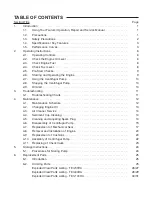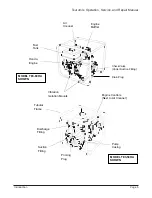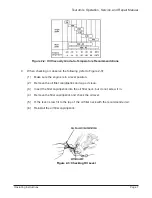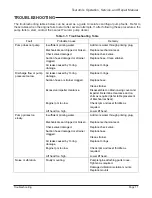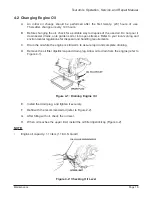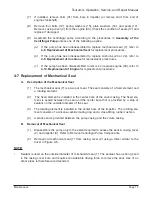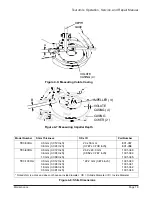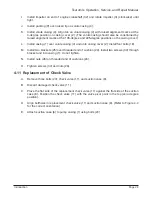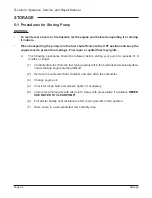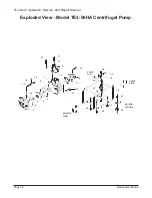
Troubleshooting
Page 11
Tsurumi’s Operation, Service, and Repair Manual
TROUBLESHOOTING
The troubleshooting tables below can be used as a guide to isolate centrifugal pump faults. Refer to
these tables when the engine fails to start after several attempts. If, after following these procedures, the
pump fails to start, contact the nearest Tsurumi pump dealer.
Table 3-1: Troubleshooting Table
Fault
Probable Cause
Remedy
Pump does not pump.
Insufficient priming water.
Add more water through priming plug.
Mechanical seal chipped or broken.
Replace mechanical seal.
Check valve damaged.
Replace check valve.
Suction hose damaged or strainer
clogged.
Replace hose. Clean strainer.
Air leaks caused by O-ring
damage.
Replace O-rings.
Discharge flow or pump
pressure too low.
Air leaks caused by O-ring
damage.
Replace O-rings.
Suction hose or strainer clogged.
Replace hose.
Clean strainer.
Excessive impeller clearance.
Disassemble to obtain casing cover and
impeller. Determine clearance and re-
shim as required (refer to Replacement
of Mechanical Seal).
Engine rpm too low.
Check rpm and reset throttle as
required.
Lift head too high.
Lower lift head.
Pump primes too
slowly.
Insufficient priming water.
Add more water through priming plug.
Mechanical seal chipped or broken.
Replace mechanical seal.
Check valve damaged.
Replace check valve.
Suction hose damaged or strainer
clogged.
Replace hose.
Clean strainer.
Air leaks caused by O-ring
damage.
Replace O-rings.
Engine rpm too low.
Check rpm and reset throttle as
required.
Lift head too high.
Lower lift head.
Noise or vibration.
Faulty mounting.
Pump/engine attaching parts loose.
Tighten as required.
Damaged vibration isolation mounts.
Replace mounts.



